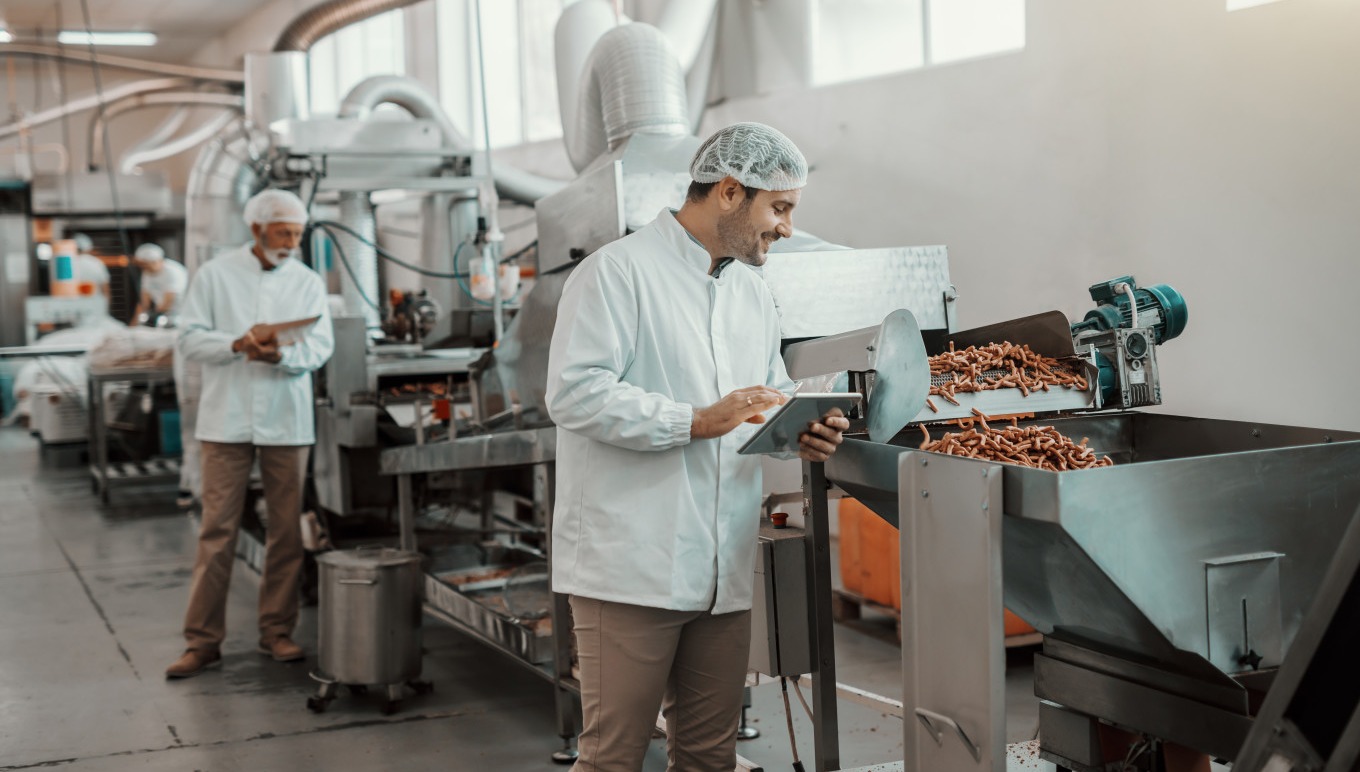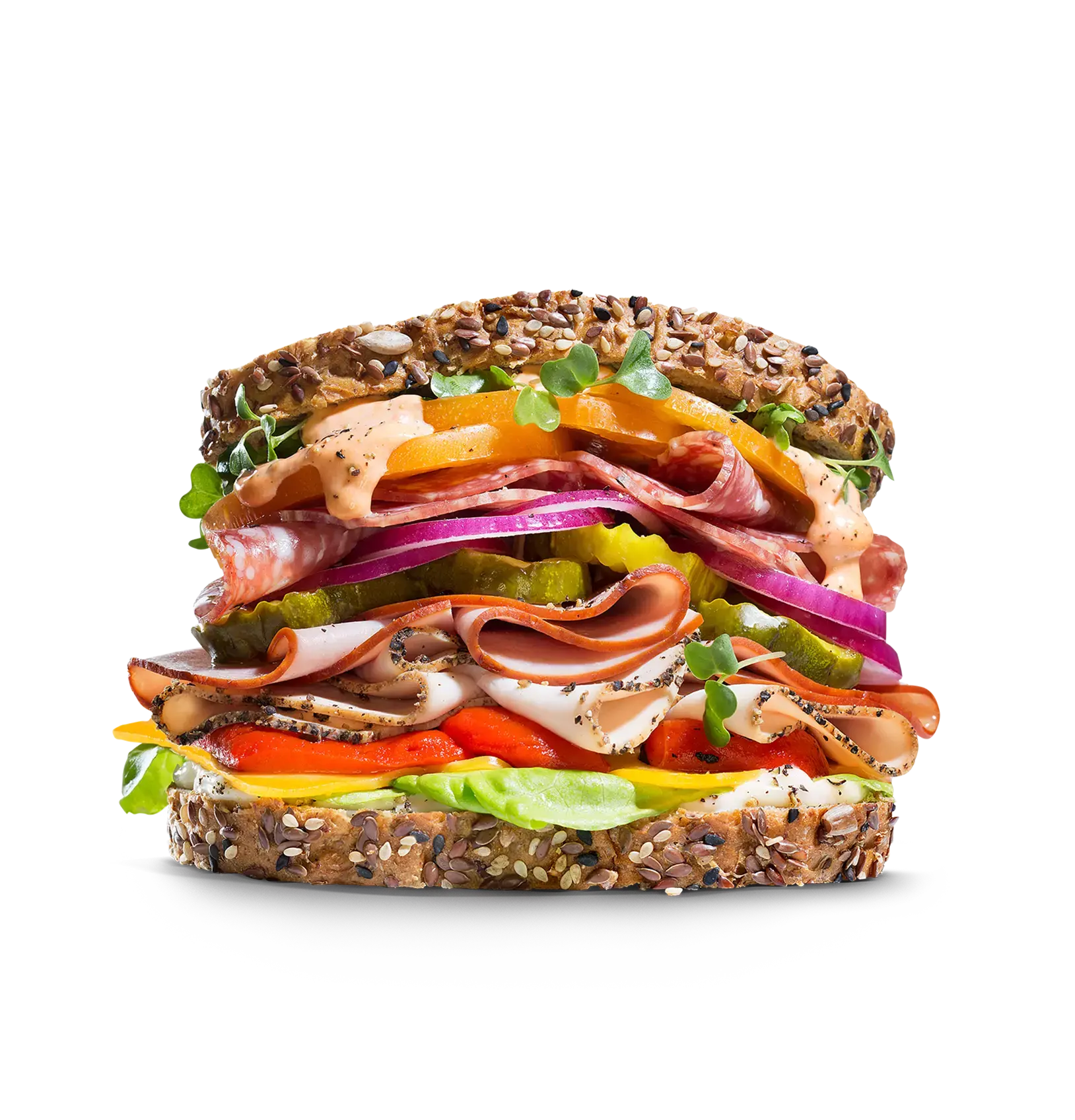Featured in this post
Food Traceability: How Technology Allows Your Business To Meet the Challenge
Food Traceability: How Technology Allows Your Business To Meet the Challenge

Simply put, food traceability is a major consideration for every business in the industry. Today’s focus on food safety and brand accountability puts the onus on food and beverage organisations like yours to track all materials from the beginning of the supply chain to the end. And innovative solutions to serve this purpose are in high demand as a result.
Thankfully, technologies that make complete traceability a reality have emerged. Food enterprise resource planning (ERP) systems are among the best and most widely used platforms, as they give food and beverage companies the confidence that they can satisfy the demands of consumers and regulatory bodies alike on this front.
But that’s just the appetizer before the full meal—the topic of food traceability is an increasingly complex one and warrants being broken down in greater detail. Here, we’ll start with the basics and then dive deep into why you need to be able to trace everything that moves through your facilities, as well as how that is best accomplished.
What Is Food Traceability?
Food traceability is the practice of tracking all materials used in the production, processing and distribution of food and beverage products. That entails capturing critical granular information at every step along the supply chain, from source to consumer.
The kind of data that must be recorded will vary from ingredient to ingredient and product to product, but for truly airtight traceability, the facts and figures should be comprehensive—that means high-level characteristics, as well as finer details. The list includes, but is not limited to:
Country of origin
Weight
Quantity
Lot and serial numbers
Expiry dates and shelf life
Nutrition statistics
Location at all critical tracking events (CTEs)
Shipping methods
Surfaces with which materials came into contact
Employees who handled the materials
Allergen information
And more…
It’s an extensive, if not exhaustive, collection of information, but it’s required for complete traceability. And in the end, that’s what businesses like yours need to succeed in a competitive, dynamic food and beverage marketplace.
Why Is Traceability Important in Food?
The demand for food traceability primarily is driven by two different but equally important groups: consumers and regulatory bodies. Both expect transparency and dependability when it comes to food and beverage products, and they both must be satisfied.
After all, the former group will largely determine how financially successful your company is, while the latter carries the authority of the government and can altogether halt your operations should violations be identified. Both are motivated primarily by the need for safety, especially on the front of properly identifying and labelling allergens that present health risks to vulnerable individuals.
Still, there are other concerns also at play:
Sprawling supply chains: The increasingly global nature of food and beverage supply chains means that there are more stops along the way, and thus more opportunities for mishaps and contamination.
Sustainability: Responsible sourcing of materials is a subject of scrutiny from both consumers and regulatory agencies, so effectively capturing the origin of all ingredients is vital.
Brand reputation: To be known as a business that clearly presents the facts to customers in an understandable and clear fashion is a major competitive advantage and encourages consumer loyalty.
Compliance: Violations of traceability regulations can result in major consequences for those found not in compliance—these can range from penalties and fines to even worse outcomes like permanent closure.
Emergency preparedness: In the case of a product withdrawal or recall, time is of the essence. It’s only with total traceability of all materials that the necessary information will be on-hand to prevent contamination issues from escalating.
Even more reasons exist, but this handful alone should be enough to convince you of the necessity for food traceability.
What Regulations and Agencies Are Relevant?
When it comes to food traceability regulations, several sets of standards are considered universal. The following organisations and regulatory bodies have established guidance for traceability that all food and beverage businesses should take into account:
Global Food Safety Initiative (GSFI): Originally founded in 2000 as one of the first international food safety bodies, GSFI remains a leader in setting standards and ensuring compliance around the world.
Safe Quality Food Institute (SQFI): A division of FMI, the Food Industry Association, this body grants the important SQF certification, which attests to a food and beverage organisation’s commitment to a culture of food safety.
Foundation FSSC and Food Safety System Certification 22000 (FSSC 22000): With FSSC 22000, Foundation FSSC seeks to define the risks and hazards present in food and beverage manufacturing operations. They also provide sector-specific Pre-Requisite Programs (PRPs).
BRC Global Standards (BRCGS): These standards address food safety, storage, distribution and packaging materials, and they are held in high regard in more than 130 countries. The accompanying certification can be granted by any of a number of different auditing organisations.
GS1 Global Traceability Standards: This is the most widely used guidance specific to traceability, with more than 1.5 million businesses worldwide implementing these standards in their processes.
Current Good Manufacturing Processes (cGMP): Originally established by the U.S. Food and Drug Administration (FDA), cGMP standards are now recognised internationally as best practices for minimising risks involved in the production, processing and packaging of food and beverages (as well as drugs and medical services).
Depending on where your facilities are located, your business will need to understand and comply with certain country- and region-specific requirements. In the U.S., the Food Safety Modernization Act (FSMA) passed in 2011, putting in place the regulations necessary for compliance, and the enforcement of the Food Traceability Final Rule—set for July 2028—will demand even more of businesses that handle items on the Food Traceability List (FTL).
Meanwhile, the UK’s main sources of guidance for food traceability come from the Food Safety Act of 1990, which was updated in 1999 to establish the Food Standards Agency—bolstering the country’s approach to protecting public health. And in greater Europe, the EU established its General Food Law Regulation in 2002, as well as the European Food Safety Authority (EFSA) to enforce the standards therein.
What Are the Best Practices for Food Traceability?
Seeing as how every food and beverage company differs in scale and nature, it would be impossible to compile a truly complete list of best practices for food traceability. However, there are a number of measures that all organisations should put in place to create a foundation for a culture of food safety.
The following are some of the essential best practices for your food product traceability procedures:
Complete, granular data capture: The importance of this practice was stressed previously, but it bears repeating. Constantly collecting and updating critical information pertaining to your materials is the basis for sound food traceability. Besides the facts and figures mentioned earlier, don’t forget the importance of documentation and historical change records, as these can be crucial in case of an audit.
Quality control: Your processes should include built-in checks to assess the important quality characteristics of your materials. Note that this isn’t only important for finished products that are set to be shipped; it’s vital that you conduct readings and measurements at the time of receipt and at each interstitial stage so that changes and deviations can be flagged as soon as they arise.
Preventative maintenance: There’s simply no excuse for equipment malfunctions, especially not if they have the potential to impact the safety of your products. Don’t skimp on these efforts in an attempt to maximise uptime. It could come back to bite you in the end should you face a sudden unexpected stoppage due to equipment failure, more expensive repairs down the road or even a total equipment replacement resulting from neglected maintenance.
First-expiry, first-out (FEFO) inventory picking: It’s vital to approach picking using these principles not only to prevent expired materials from being used in your products, but also to get the most out of the ingredients you purchased. If you can ensure that you’re always following this method of inventory management, you’ll save money and reduce waste while also doing your part to maintain excellent food safety standards.
Multi-layer tracking: Simply maintaining information at the item level isn’t enough; you need to be able to track by lot, serial number, container and shift. All could become relevant in the event of contamination, as you’ll need to identify all possible sources, as well as a comprehensive list of other materials or lines that might be affected.
Labelling: We’ll dive into the best ways to convey relevant data with your material and product labels shortly, but this must be noted here as it is all too often that under-labelled and incorrectly labelled items result in food safety emergencies.
It would be quite the ask to collect so much information, perform all necessary checks, schedule regular maintenance and implement strict inventory picking and labelling standards if you had to rely on manual processes and human memory alone. Luckily, food and beverage ERP solutions were designed to help businesses like yours accomplish it all with less effort and greater accuracy.
How Can ERP Systems Enhance Food Traceability Practices?
Paper-based record keeping is a thing of the past, and isolated spreadsheets created in Microsoft Excel won’t cut it either. Given the complex nature of food traceability and the myriad factors at play, only advanced ERP systems can provide total assurance that your efforts are effective in keeping your products safe and your operations compliant.
The best ERP for food and beverage businesses offer a range of industry-specific features designed to create a cross-functional, integrated system that holistically transforms processes from the factory floor to the board room. Here are some key ways in which food ERPs make traceability more manageable and will save your staff time, frustration and worry while supporting excellent safety standards:
Automatic granular data collection: By intelligently scheduling all information capture and quality control checks ahead of time, food and beverage ERP platforms can help ensure that you never miss these critical steps in your day-to-day operations. This eliminates the risk of human error, gives you confidence that all facts and figures in the system are up-to-date and covers multiple layers of tracking at once.
Integration with smart sensors and scales: To facilitate the automatic capture of material and product data, ERP integrates with Internet of Things (IoT) and other connected smart devices to immediately import new readings and update your database. Combined with automatic scheduling, this creates an uncompromisingly consistent and accurate approach to this critical step.
Robust inventory management: The best food ERP solutions, like Aptean Food & Beverage ERP, are designed with best practices in mind and thus include features for FEFO inventory picking, as well as functions for optimising stock levels and automatic re-ordering. You’ll always know exactly what you have on-hand with a food and beverage ERP in place.
Integration with barcode and QR code scanners: Barcodes and QR codes are the best ways to capture a large amount of data on ingredient and product labels, and food ERP systems facilitate the use of these technologies by integrating with the appropriate scanners. This too, can be automated so that everything is scanned at every CTE and your database updates in real time.
Vendor and purchaser contact and contract management: As stated before, food traceability isn’t just about tracking what’s inside your facilities—you need all pertinent information from one end of the supply chain to the other. ERP platforms’ ability to collect and maintain the vital information for your vendors and suppliers means you’re always in sync with where your materials came from and where they’re headed.
Intelligent automatic maintenance scheduling: Food and beverage ERP have the ability to intelligently schedule your periods of downtime for maintenance to ensure that you lose minimal production time. That way, you don’t have to compromise on either safety or efficiency.
Technology is always moving fast, and ERP systems are evolving along with it. Food and beverage businesses around the world that want to compete in the markets of the future are undertaking digital transformations with food ERP software as their foundations. Don’t get left behind.
Beyond ERP: Smart Tech That Boosts Food Traceability
Your ERP system does a lot of heavy lifting when it comes to food traceability. But it can’t do everything independently. You need to integrate complementary technologies to fully leverage your food ERP and its food traceability features—and to remain compliant with evolving safety standards.
Integrating these technologies with your ERP means you can elevate visibility, speed up communication and respond faster in high-pressure situations. Here’s a breakdown of the most impactful technology to consider:
Electronic data interchange (EDI): EDI facilitates the seamless exchange of standardised documents between your business and trading partners. By automating transactions like purchase orders and invoices, EDI reduces manual errors and accelerates data sharing, ensuring that critical traceability information is consistently and accurately communicated across the supply chain.
Cloud-based software: Cloud solutions are scalable and accessible platforms for storing and analysing traceability data. With real-time data synchronisation, your team can monitor supply chain activities from anywhere, enabling swift responses to potential issues and enhancing collaboration among stakeholders.
Artificial Intelligence (AI): AI algorithms can analyse vast datasets to identify patterns and anomalies, predicting potential contamination risks before they escalate. By integrating AI with your ERP, you can proactively manage food safety, optimise inventory and improve decision-making processes.
Blockchain technology: Blockchain provides a decentralised and immutable ledger of all transactions within your supply chain. By recording each step—from sourcing to distribution—via blockchain, you ensure transparency and accountability, making it easier to trace products and verify their authenticity.
When your food ERP works in sync with advanced technologies, you create a seamless, end-to-end system that delivers deeper transparency and reliability. With a comprehensive tech stack, you're ready to build a smarter, more resilient traceability ecosystem—one that's proactive, not reactive.
Partnering With a Pioneer
When it comes to implementing an ERP system—whether that’s to fulfil your food traceability requirements or to access a range of other benefits—the partner you choose is just as vital to your success as the software.
Here at Aptean, our team has decades of combined experience with the food and beverage industry, so they have a deep understanding of the challenges that complete food traceability poses for companies of all sizes. As a result, extensive knowledge of best practices and regulations informed the design of Aptean's food ERP, uniquely positioning it as a premium offering in the space.
What’s more, our solutions are built on Microsoft Dynamics 365, affording them immediate familiarity to anyone who has used any of Microsoft’s vast suite of apps and software. If your business is implementing a fully integrated system like an ERP for the first time, that’s a huge advantage for gaining widespread buy-in and training employees to leverage the system to its fullest.
We’re also committed to innovation. That’s why we’re at the forefront of integrating cloud and AI technology to further enhance food traceability. Our cloud-based ERP solutions ensure that your data is accessible anytime, anywhere, facilitating better collaboration and decision-making. Furthermore, we are proud to help our clients leverage AI capabilities to provide predictive insights, helping them anticipate challenges and optimise operations proactively.
Want to know more about how Aptean can streamline and modernise your approach to traceability and give you the complete visibility and information necessary for the fast-moving food and beverage space?
Contact us today or take our free online food ERP product tour to see some of these traceability features in action.
Get in Touch Today to Speak With an Expert in Your Industry
To grow your business, you need a food ERP built specifically for your industry challenges. We're ready to help—reach out today and we'll help you find the right solution.



 Jack Payne | Vice President, Product Management & Solutions Consulting
Jack Payne | Vice President, Product Management & Solutions Consulting